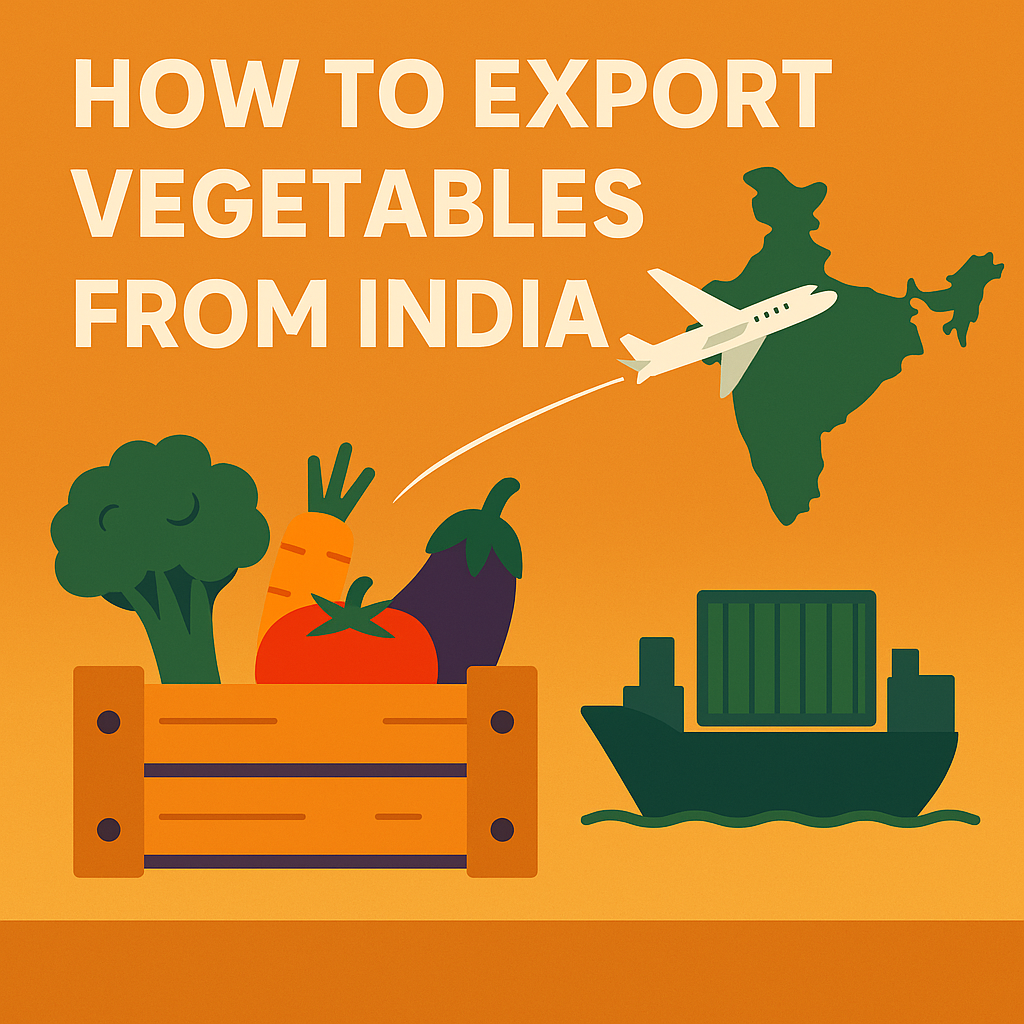
India is one of the world’s leading producers and exporters of vegetables. With a wide variety of climate zones and fertile land, the country produces a vast range of vegetables throughout the year. The global demand for Indian vegetables is growing, thanks to their freshness, affordability, and ethnic importance among Indian and Asian populations abroad.
For entrepreneurs looking to enter the vegetable export business, this guide covers everything you need to know to get started.
✉️ Step-by-Step Procedure to Export Vegetables from India
1. Company Registration & Legal Compliance
- Start by registering your company as a legal business entity (Proprietorship, Partnership, LLP, or Pvt Ltd).
- Apply for a PAN number in your business name.
2. Get an Importer Exporter Code (IEC)
- IEC is mandatory for any export/import business.
- Issued by the Director General of Foreign Trade (DGFT).
- Can be applied for online via the DGFT portal.
3. Register with APEDA
- The Agricultural and Processed Food Products Export Development Authority (APEDA) is a key body that regulates and promotes agro-product exports.
- APEDA registration is required to export vegetables.
- After registration, you can also apply for financial assistance and use APEDA-recognized labs and packhouses.
4. Ensure FSSAI Compliance
- FSSAI (Food Safety and Standards Authority of India) registration/license ensures your handling, processing, and packaging is food-safe.
5. Choose Your Target Market
- Analyze which countries have the highest demand for Indian vegetables.
- Top destinations include:
- UAE, Qatar, Saudi Arabia, Oman
- UK, Germany, Netherlands, France
- USA, Canada, Malaysia, Singapore
6. Source Quality Vegetables from Registered Farms
- Work with MangoNet / HortiNet / APEDA-registered farms to ensure traceability.
- Ensure the vegetables are sorted, graded, and handled under hygienic conditions.
7. Packaging & Labelling
- Export vegetables are packed in corrugated boxes, ventilated cartons, or thermocol boxes depending on the type of produce.
- Proper labeling is required, including:
- Product Name
- Net Weight
- Country of Origin (Product of India)
- Date of Packing & Expiry
- Exporter Details
8. Cold Chain & Logistics
- Vegetables are highly perishable; hence, they require pre-cooling and cold storage at 8-10°C before export.
- Air cargo is commonly used for quick delivery.
- Booking is done based on AKE (Unit Load Devices) of 650-800 kgs per shipment.
9. Phytosanitary Certificate (PSC)
- A Phytosanitary Certificate is mandatory for most countries.
- Issued by PQIS (Plant Quarantine and Inspection Services).
- Ensure your shipment passes inspection and quarantine protocols.
10. Documentation for Export
Make sure the following documents are ready:
- Commercial Invoice
- Packing List
- Airway Bill / Bill of Lading
- Phytosanitary Certificate
- Certificate of Origin
- FSSAI License copy
- APEDA Registration copy
11. Customs Clearance and Shipment
- Appoint a reliable CHA (Customs House Agent) for clearance.
- After customs clearance, cargo is loaded and dispatched to the destination.
🌐 Tips for Success in Vegetable Export
- Build strong relationships with overseas importers and retail chains
- Use professional packaging to add brand value
- Stick to consistent quality and timely shipments
- Attend international food expos or trade fairs
- Understand import regulations of target countries to avoid rejections
✅ Conclusion
Exporting vegetables from India is a profitable business opportunity if handled with the right certifications, quality standards, and export logistics. Whether you’re just starting or looking to scale, following the right procedure helps build long-term global trust.
If you're looking for a trusted supply of export-quality vegetables, Bharani Imports & Exports offers certified, traceable, and weekly fresh shipments.
📞 +91 9133328284
How to Export Vegetables from India: A Detailed Guide for New and Experienced Exporter